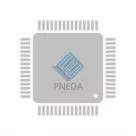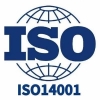How to choose the E-Marker chip used in energy storage equipment

In the field of modern power storage, E-Marker chip plays an increasingly prominent role. As an intelligent recognition system, E-Marker chip can not only improve the performance of equipment, but also effectively monitor the transmission and use of power. Understanding how to select the E-Marker chip suitable for energy storage equipment is an important link to ensure the efficient and safe operation of the equipment. This paper will discuss in detail several key factors that need to be considered when selecting E-Marker chip in energy storage equipment.
1. Compatibility
First, compatibility is a factor that must be considered when selecting E-Marker chips. Different energy storage devices have different electrical and communication standards, and it is important to ensure that the selected E-Marker chip can be seamlessly connected to the existing equipment. Considering the diversity of protocols, such as USB Power Delivery (USB PD) and USB Type-C, choosing E-Marker chips adapted to these standards can avoid later compatibility problems. Therefore, carefully consulting the technical specifications and documents of the chip manufacturer to understand the communication standards and protocols supported by the chip can greatly reduce the trouble in use.
2. Functional features
The functional characteristics of E-Marker chip directly affect the performance and flexibility of energy storage equipment. Different models of E-Marker chips provide different functions, including:
- Power monitoring: Some E-Marker chips can monitor the flow of power in real time to help detect anomalies.
- Charge management: includes the ability to dynamically adjust charge current and voltage.
- Temperature sensing: Built-in temperature monitoring enables the chip to issue an alarm when the temperature is abnormal, thereby protecting the energy storage device. Therefore, when selecting the chip, it is recommended to find the most suitable E-Marker chip according to the specific application requirements of the energy storage device and from the perspective of functional characteristics.
3. Data transmission rate
In energy storage equipment, the real-time transmission of data is very important. The selection of E-Marker chips should take into account their data transmission rates to ensure efficient data exchange. For example, in some application scenarios, rapid data feedback can adjust the charging state or shutdown protection mechanism in time to avoid the occurrence of dangerous situations. In addition, the selection of E-Marker chips that support high data rate transmission can provide scalability in future upgrades.
4. Safety performance
With the increase in the number and scale of energy storage devices, security issues are also prominent. Therefore, the safety performance of E-Marker chip is particularly important. You need to pay attention to whether the chip has security certification, such as compliance with international standards such as ISO/IEC. At the same time, the chip's encryption mechanism, identity verification and other functions also directly affect the security of the overall energy storage system. Choosing mature products and ensuring their safety in practical applications can effectively reduce risks.
5. Size and package type
The physical size and package type of E-Marker chip have a direct impact on the design and integration of energy storage equipment. For energy storage devices with limited space, it is more convenient to choose miniaturized and lightweight E-Marker chips. At the same time, different package types will also affect thermal management, so choose a package with better heat dissipation performance as much as possible to optimize the long-term stability and reliability of the device.
6. Cost-effectiveness
In the case of limited project budget, the cost-benefit analysis of E-Marker chip is particularly important. It is not only the pursuit of low prices, but also the comprehensive consideration of chip function, performance and long-term maintenance costs. Although the price of high-quality chips is slightly higher, it may bring higher cost performance from the point of view of performance reliability and later maintenance. Therefore, when evaluating, it is recommended to compare different models from multiple dimensions to find the most economical solution.
7. Manufacturer reputation and after-sales service
Another key consideration in choosing E-Marker chips is the manufacturer's reputation and after-sales service. Understanding the industry experience, product evaluation, and technical support capabilities of the manufacturer can help ensure subsequent equipment maintenance and technical consultation. Manufacturers with a certain market share and good customer feedback, their product quality and service can be more trustworthy. In addition, ensuring that vendors provide complete technical documentation, development tools, and quality after-sales support will help resolve potential technical issues during implementation.
8. Standards and norms
Following the corresponding industry standards and specifications is also very important in the selection of E-Marker chips. The safety and performance of all types of energy storage devices must comply with international and regional standards, such as IEC and UL standards, to ensure the suitability of products in different markets around the world. Confirming that the selected chip meets the relevant standards can avoid potential compliance issues and market risks.
9. User experience and feedback
The actual experience and feedback of users should also be an important reference for the selection of E-Marker chips. By knowing how other products perform in actual use, it can help to make more informed choices to some extent. Follow industry technical articles, user forums, and feedback reviews to gain first-hand information that drives the rationality and effectiveness of the decision-making process.
In energy storage equipment, the selection of E-Marker chip is not only a technical issue, but also involves comprehensive consideration at multiple levels. A thorough understanding of the parameters and requirements, combined with specific application scenarios, a full range of analysis and selection, in order to ensure the stable operation of energy storage equipment in an efficient and safe environment.
Die Produkte, an denen Sie interessiert sein könnten
 |
FLTR100V10 | LINE FILTER 75VDC 10A TH | 217 More on Order |
 |
CCR0512FPSXXZ01A | AC/DC CONVERTER 12V 500W | 5040 More on Order |
 |
CLP0224FPXXXZ01A | AC/DC CONVERTER 24V 200W | 6516 More on Order |
 |
UNVT012A0X43-SRZ | MODULE DC DC CONVERTER | 8262 More on Order |
 |
AXH010A0FZ | DC DC CONVERTER 3.3V 33W | 8802 More on Order |
 |
EQW040A0M1Z | DC DC CONVERTER 1.5V 60W | 6030 More on Order |
 |
EQW012A0A1-SZ | DC DC CONVERTER 5V 60W | 5796 More on Order |
 |
LW015F | DC DC CONVERTER 3.3V 15W | 3060 More on Order |
 |
LW015B91 | DC DC CONVERTER 12V 15W | 5112 More on Order |
 |
JW050B | DC DC CONVERTER 12V 50W | 8856 More on Order |
 |
JW030A1-M | DC DC CONVERTER 5V 30W | 7668 More on Order |
 |
JFW150F1 | DC DC CONVERTER 3.3V 99W | 2232 More on Order |
 |
JAW050A61 | DC DC CONVERTER 5V 50W | 7830 More on Order |
 |
JAHW075A1 | DC DC CONVERTER 5V 75W | 3978 More on Order |
 |
HW005A0F1 | DC DC CONVERTER 3.3V 17W | 3528 More on Order |
 |
FW300H1 | DC DC CONVERTER 24V 300W | 7686 More on Order |
 |
EBDW020A0B841-02HZ | DC DC CONVERTER 12V 240W | 3438 More on Order |
 |
JRCW016A0R641Z | DC DC CONVERTER 28V | 8766 More on Order |
 |
QBVW033A0B541Z | DC DC CONVERTER 12V 400W | 5814 More on Order |
 |
EHHD010A0B641Z | DC DC CONVERTER 12V 120W | 8280 More on Order |
 |
KNW020A0F41-88Z | DC DC CONVERTER 3.3V 66W | 4788 More on Order |
 |
UDT020A0X3-SRDZ | DC DC CONVERTER 0.45-5.5V | 8478 More on Order |
 |
EQW020A0F1Z | DC DC CONVERTER 3.3V 66W | 4752 More on Order |
 |
IND011SIP | DC DC CONVERTER 0.6-5.5V 11W | 8910 More on Order |









